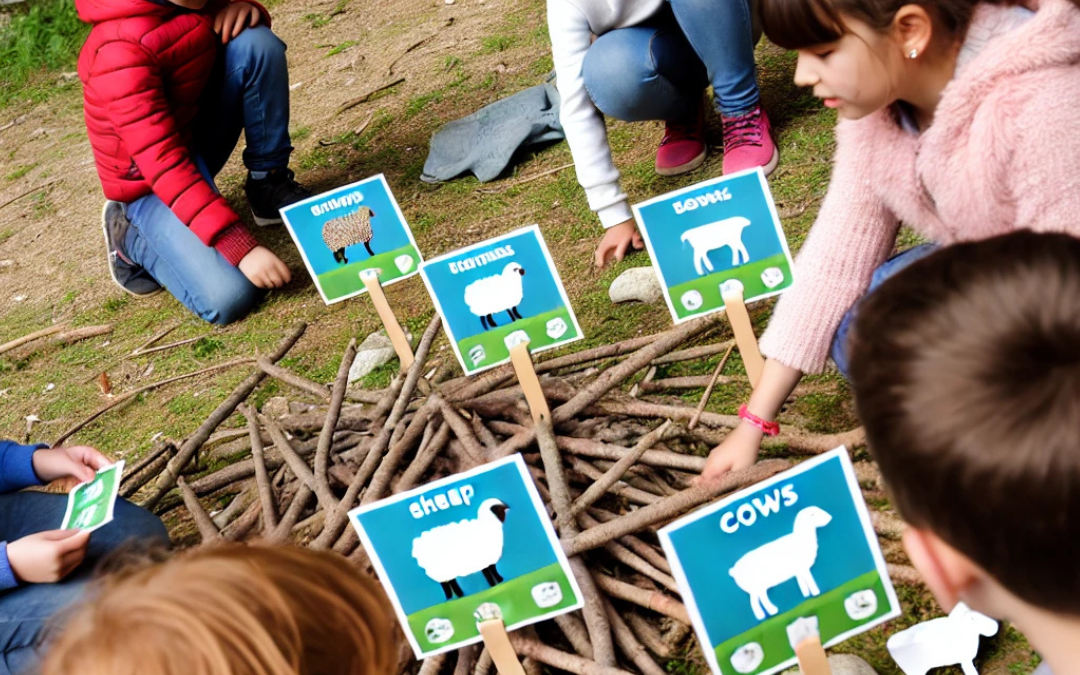What is Nature-Based Learning?
Nature-based learning is an experiential education approach that takes learning beyond the classroom and into natural environments such as forests, parks, and school gardens. This method enhances creativity, problem-solving, and academic achievement by allowing students to interact with the natural world.
As a core component of outdoor learning, nature-based education aligns with research from the Children & Nature Network, showing that students who regularly engage in outdoor learning demonstrate higher focus, reduced stress, and stronger critical thinking skills.
How Does Nature-Based Learning Fit Into Outdoor Learning?
Nature-based learning is a specialized form of outdoor learning that focuses on direct experiences with nature, rather than just outdoor environments. According to the Institute for Outdoor Learning, nature-based learning fosters deep environmental awareness, sustainability education, and hands-on skill development.
Why is Nature-Based Learning Important?
Research-backed benefits of nature-based learning include:
✅ Boosts academic performance – Outdoor lessons improve engagement and knowledge retention (Education Endowment Foundation).
✅ Enhances mental health – Reduces anxiety and stress while improving emotional regulation (National Wildlife Federation).
✅ Encourages environmental stewardship – Helps children develop a lifelong connection with nature.
✅ Supports physical development – Increases movement and physical activity, reducing obesity rates.
✅ Fosters creativity & problem-solving – Unstructured outdoor play improves cognitive flexibility.
According to research by The Wildlife Trusts, students who participate in nature-based education display higher levels of curiosity, confidence, and collaboration.
Key Nature-Based Learning Activities
Nature-based learning integrates play, exploration, and hands-on experiences into the curriculum. Here are some engaging activities for different age groups:
For Early Years (EYFS & Preschool)
🌿 Sensory Nature Walks – Encourage children to feel, smell, and observe their surroundings.
🎨 Mud Painting & Natural Art – Use soil, leaves, and flowers to create artwork.
🦋 Bug Hunts & Mini-Beast Explorations – Teach children about local wildlife and biodiversity.
For Primary Schools
📝 Outdoor Storytelling & Literacy – Write and share nature-inspired stories.
🧮 Maths in Nature – Count leaves, measure tree heights, or create patterns with natural materials.
🌍 Ecosystem Studies – Observe and discuss local plant and animal life.
For Secondary Schools
🔬 Outdoor STEM Experiments – Conduct water quality tests, soil analysis, or biodiversity surveys.
🏗️ Survival Skills & Bushcraft – Teach shelter-building, fire-lighting, and orienteering.
💡 Sustainability Projects – Start a school garden or community tree-planting initiative.
How to Implement Nature-Based Learning in Schools
Many educators want to incorporate nature-based learning but don’t know where to start. Here’s a step-by-step guide:
1. Utilize School Grounds & Local Natural Spaces
- Turn school gardens, playgrounds, and local parks into learning environments.
- Use forest school principles to guide lesson planning (Forest Schools Association).
2. Integrate Outdoor Learning into the Curriculum
- Align nature-based activities with national maths, literacy, and science curricula.
- Use hands-on learning techniques to teach problem-solving and environmental awareness.
- Encourage project-based learning that includes real-world ecological issues.
3. Provide Training for Teachers
- Offer Outdoor Learning CPD training (The Muddy Puddle Teacher).
- Enroll in nature-based learning certification programs (Learning Through Landscapes).
4. Involve Parents & the Community
- Host family outdoor learning days to encourage participation.
- Partner with local environmental organizations for hands-on projects.
Nature-Based Learning vs Traditional Classroom Learning
| Feature | Nature-Based Learning | Traditional Classroom Learning |
|---|---|---|
| Learning Environment | Natural settings (forests, parks) | Indoor classrooms |
| Engagement | High (sensory & hands-on) | Variable (depends on teaching method) |
| Physical Activity | High (movement, exploration) | Low (mostly sitting) |
| Creativity | Encouraged through outdoor play | More structured & guided |
| Environmental Awareness | Strong focus on sustainability | Limited nature connection |
The Future of Nature-Based Learning
As schools recognize the academic and emotional benefits of outdoor learning, nature-based education is expanding worldwide. Governments and organizations like UNESCO are promoting nature-based learning as part of a sustainable education framework.
Incorporating green spaces, eco-friendly initiatives, and outdoor learning into school curriculums ensures that children develop lifelong skills and a deeper connection with nature.
FAQs About Nature-Based Learning
Q: What age group is nature-based learning suitable for?
A: Nature-based learning is beneficial for all ages, from early years to secondary school students. Activities can be adapted to different developmental stages.
Q: Can nature-based learning be done in urban areas?
A: Yes! Schools can utilize rooftop gardens, schoolyards, and local parks to create meaningful outdoor learning experiences.
Q: How does nature-based learning support academic achievement?
A: It integrates maths, literacy, science, and social studies in an engaging, real-world context. Research from the Education Endowment Foundation shows that outdoor learning improves focus, comprehension, and retention.
Next Steps for Educators & Schools
✅ Join a Nature-Based Learning Training Program – The Muddy Puddle Teacher
✅ Download Free Outdoor Learning Resources – Forest Schools Association
✅ Start Implementing Nature-Based Learning Today – Sign Up for Training


